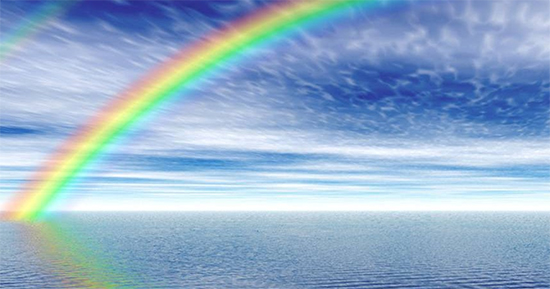- Rainbows can exist at night
Moon bows are the effects of the moon’s light passing through water droplets. The bow itself might appear white because moonlight is less intense than day, but long exposure cameras can capture the whole spectrum of hues.
- Rainbows are optical illusions
A rainbow is produced when light rays bend, generating an effect that is visible but cannot be touched or approached, similar to a mirage. Light refracts and reflects through water droplets to create rainbows, which divide white light into the seven shades of the spectrum.
- Using this acronym, you can keep in mind the rainbow’s colors.
Let us introduce Roy G. Biv to you. If you can recall that name, you will be able to list the colors of the spectrum in the following order: red, orange, yellow, green, blue, indigo, violet. The colors are inverted because the second, smaller rainbow of a double rainbow is a mirror of the first.
- Rainbows can be full circles
Recall that the horizon is the line that divides a rainbow’s complete circle in half. It is possible to see the complete circumference of the rainbow when there is no horizon present, such as when skydiving or looking out of an Aeroplan.
- Rainbow hunters, look here
The ideal times to see a rainbow after a storm are in the morning and evening. A rainbow appears beyond the horizon when the sun is low in the sky (at an angle of precisely 42 degrees). This is because light travels through water droplets at the ideal angle. The angle of the light projects a rainbow below the horizon, where it is more likely to be obscured by trees or structures or not seen at all, depending on how high or low the sun is in the sky—for example, at 1 p.m. To increase your chances of viewing a rainbow, position yourself so that your back is toward the sun. Rainbows occur in the sky opposite the sun.
Also Read – Can It Rain Fish?



